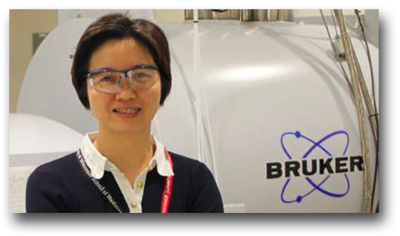High-resolution and extreme-resolution mass spectrometry instrumentation is facilitating multidisciplinary research by the Ge lab, University of Wisconsin, a leader in the field of top-down proteomics. Read on to find out how...
 Based in Madison, Wisconsin, The University of Wisconsin (UW) is a top 10 research university, with over $1 billion in annual research expenditure, making it 6th in the United States for volume of research undertaken. Professor Ying Ge is an Associate Professor in the Department of Cell Regenerative Biology, and the Department of Chemistry, as well as the Director of Mass Spectrometry in the Human Proteomics Program of the School of Medicine and Public Health at UW-Madison. She is an established leader in the field of proteomics with a special focus on cardiovascular systems biology, and her group relies on the most sophisticated equipment to push the field of top-down proteomics into the realm of mainstream science.
Based in Madison, Wisconsin, The University of Wisconsin (UW) is a top 10 research university, with over $1 billion in annual research expenditure, making it 6th in the United States for volume of research undertaken. Professor Ying Ge is an Associate Professor in the Department of Cell Regenerative Biology, and the Department of Chemistry, as well as the Director of Mass Spectrometry in the Human Proteomics Program of the School of Medicine and Public Health at UW-Madison. She is an established leader in the field of proteomics with a special focus on cardiovascular systems biology, and her group relies on the most sophisticated equipment to push the field of top-down proteomics into the realm of mainstream science.
The Research
The Ge lab aims to understand the molecular and cellular mechanisms underlying cardiovascular diseases, using cutting-edge technology such as high-resolution mass spectrometry to study comparative proteomics and metabolomics together with biochemical and physiological studies. Professor Ge’s research focus on top-down mass spectrometry-based proteomics with the goal to better understand heart diseases is unparalleled by any other group.
Top-down proteomics allows more powerful, reliable data to be obtained, as it directly analyzes intact proteins before fragmentation and allow analysis of unique proteoforms using mass spectrometry. Mass spectrometry-based top-down proteomics has unique advantages for unraveling the molecular complexity, quantifying proteoforms, deep sequencing of intact proteins, mapping modification sites with full sequence coverage, discovering unexpected modifications, identifying and quantifying positional isomers and determining the order of multiple modifications.
 Innovative integrated top-down proteomics can enable researchers to examine biomarkers in healthy and diseased models, to characterize any protein modifications present. Despite top-down proteomics emerging as an increasingly popular technique, there are still some important challenges to overcome before the method becomes fully robust. One such challenge, protein solubility, is being tackled by Professor Ge’s group by the development of novel top-down mass spectrometry-compatible surfactants, which can solubilize all protein categories effectively. The group is also developing novel strategies for high-resolution multi-dimensional liquid chromatography, to address the present issue of protein separation. Sample preparation, detection of large-sized proteins and a lack of software integration are additional challenges. Most routine labs are yet to adopt the approach because of this, but Professor Ge is positive that “we are in the best position right now to integrate these technologies with biology and medicine. At the moment, top-down proteomics is still challenging, but we can present solutions to address the challenges to help the community adapt to the top-down methods.”
Innovative integrated top-down proteomics can enable researchers to examine biomarkers in healthy and diseased models, to characterize any protein modifications present. Despite top-down proteomics emerging as an increasingly popular technique, there are still some important challenges to overcome before the method becomes fully robust. One such challenge, protein solubility, is being tackled by Professor Ge’s group by the development of novel top-down mass spectrometry-compatible surfactants, which can solubilize all protein categories effectively. The group is also developing novel strategies for high-resolution multi-dimensional liquid chromatography, to address the present issue of protein separation. Sample preparation, detection of large-sized proteins and a lack of software integration are additional challenges. Most routine labs are yet to adopt the approach because of this, but Professor Ge is positive that “we are in the best position right now to integrate these technologies with biology and medicine. At the moment, top-down proteomics is still challenging, but we can present solutions to address the challenges to help the community adapt to the top-down methods.”
The Solution
Professor Ge’s lab use three key instruments for top-down proteomics: the solariX XR™ (FTMS), Maxis II and Impact II Q-TOF, each of which provides different benefits for her work. To find out more details about Professor Ge's work and how these instruments are driving this top-down proteomics click on the button below:




